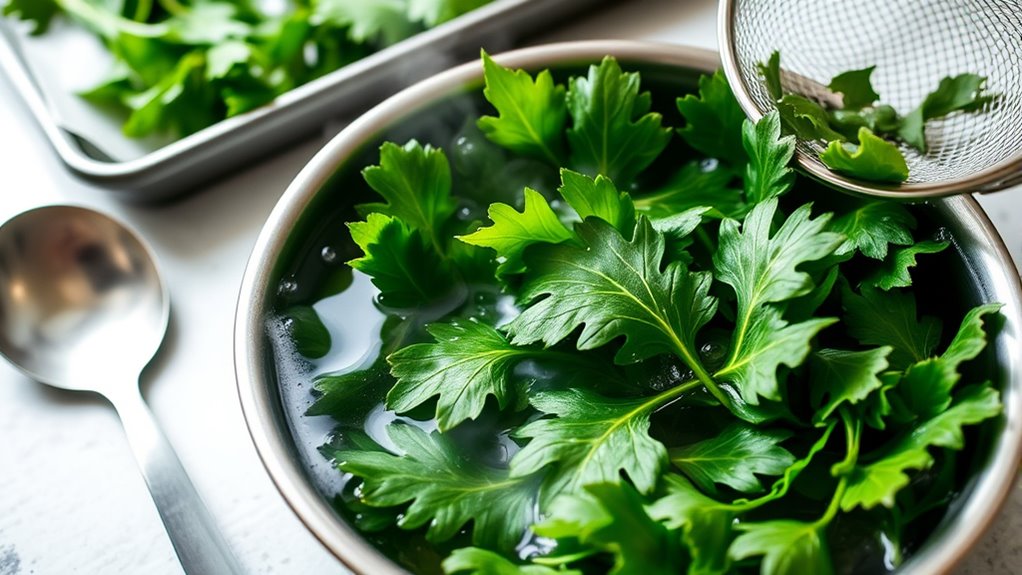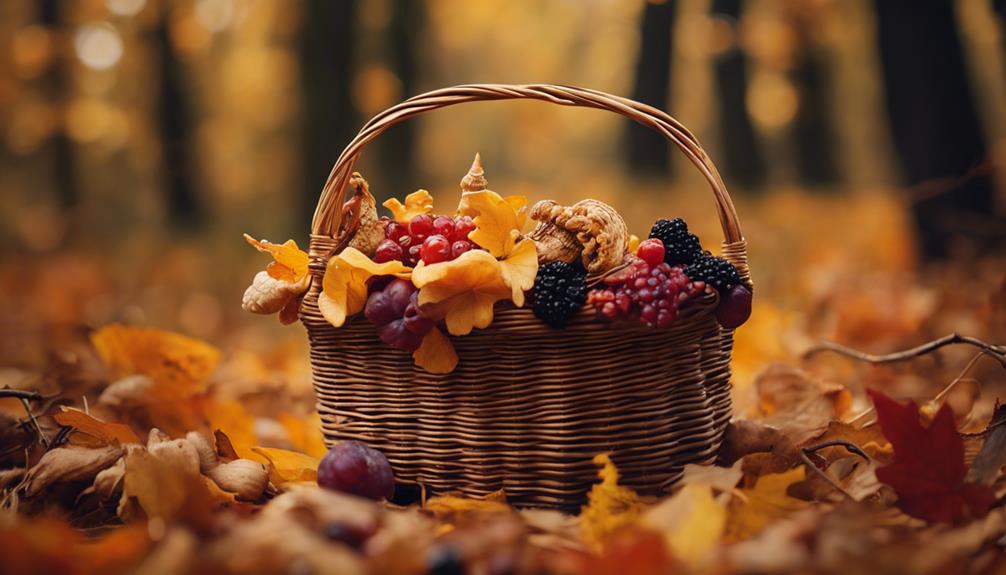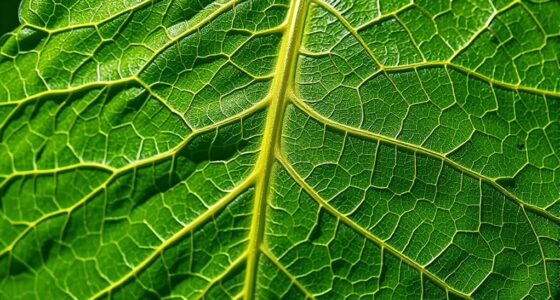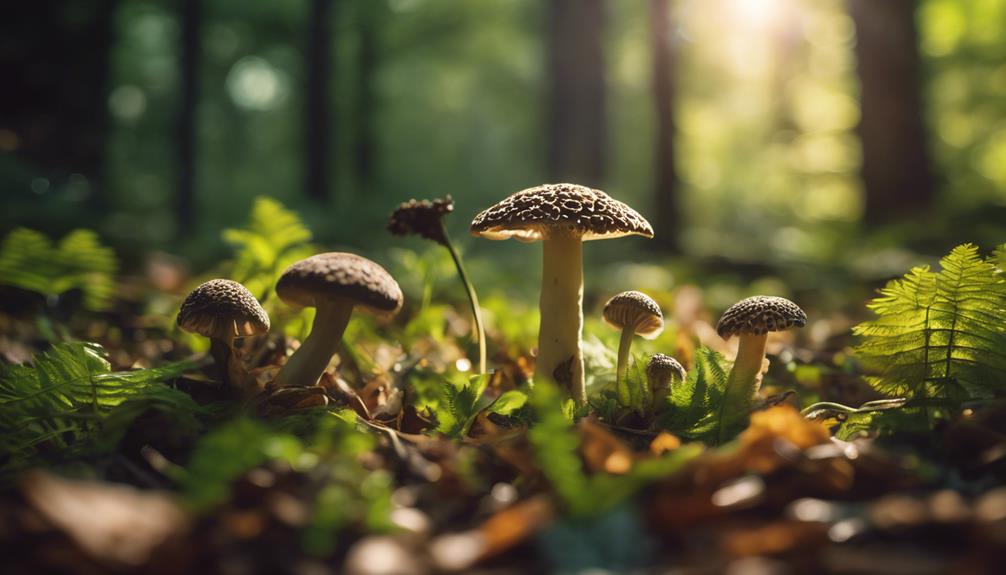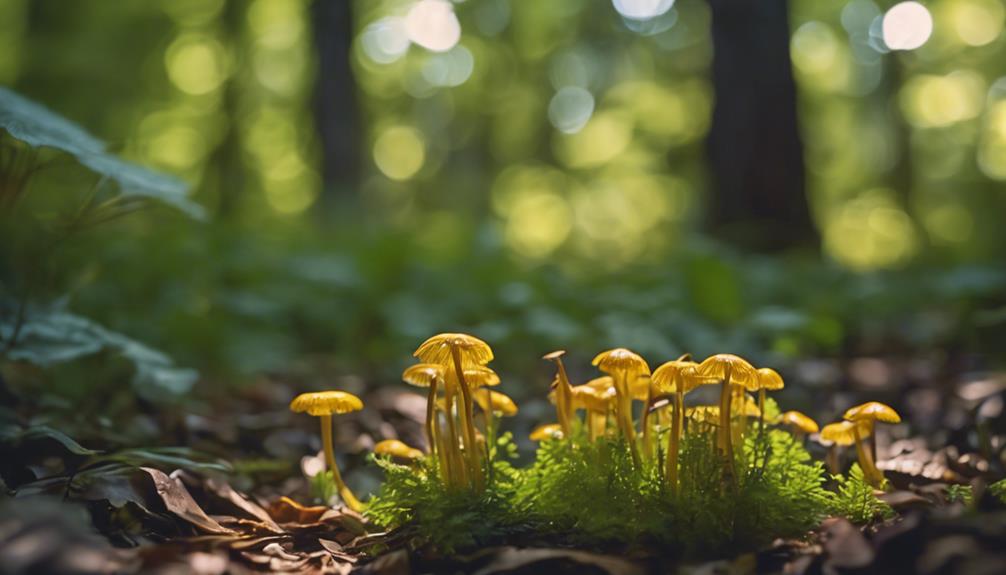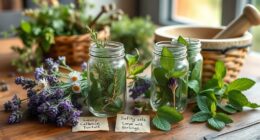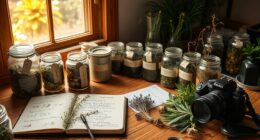To blanch and freeze wild greens, start by thoroughly washing them to remove dirt and insects, then trim any damaged parts. Bring a large pot of water to a rolling boil, add the greens in batches, and blanch them for 1-3 minutes depending on the variety. Immediately transfer the greens to an ice water bath to stop cooking, then drain and dry them thoroughly. Pack them in airtight, freezer-safe containers or bags, removing excess air, and label with the date. Continue to learn more about perfect preservation techniques.
Key Takeaways
- Thoroughly wash wild greens in cold water to remove dirt and insects before blanching.
- Bring a large pot of water to a rolling boil and blanch greens for 1-3 minutes based on type.
- Quickly transfer greens into an ice water bath to halt cooking and preserve color and nutrients.
- Drain greens thoroughly and ensure they are dry before packaging to avoid freezer burn.
- Use airtight, freezer-safe containers or bags, remove excess air, label, and store in the freezer for long-term freshness.
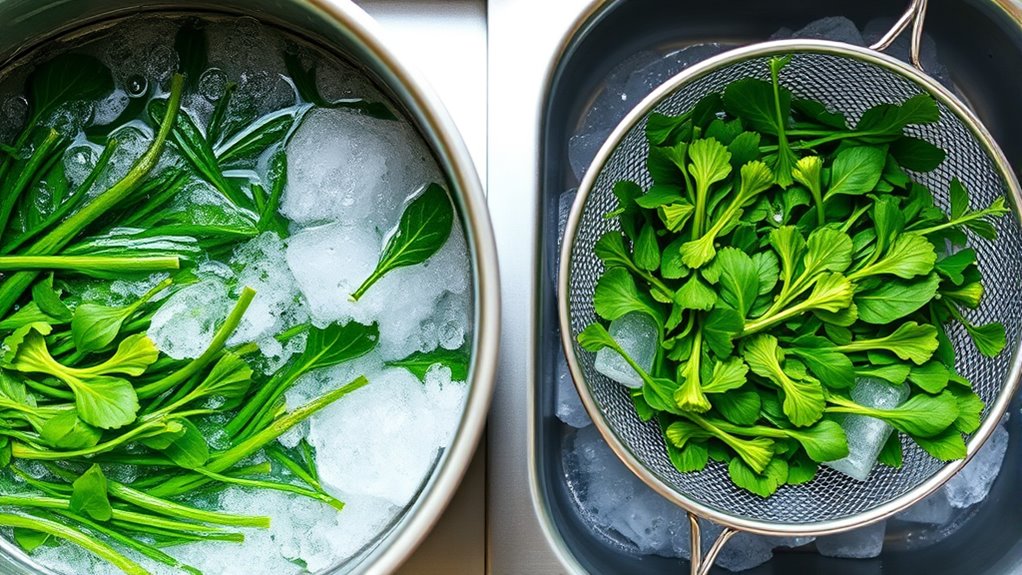
Blanching and freezing wild greens is an excellent way to preserve their flavor, nutrients, and freshness for future use. When you’re foraging for wild greens, it’s vital to use proper foraging tips to identify edible plants safely and sustainably. Once you’ve gathered your greens, the next step is to prepare them for freezing. Proper handling from the start ensures your greens stay vibrant and nutritious long after the harvest.
Begin by thoroughly washing the greens to remove dirt, insects, and any debris. Use cold water and gently agitate the leaves to prevent damage. After washing, shake off excess water or pat them dry with clean towels. Excess moisture can lead to ice crystals forming during freezing, which may compromise the texture and quality of your greens. To minimize this, you might consider using a salad spinner or allowing the greens to air dry completely before proceeding.
Thoroughly wash and dry greens to prevent ice crystals and preserve quality during freezing.
Next, prepare your greens for blanching. Bring a large pot of water to a rolling boil. While waiting, fill a large bowl with ice water—this is vital for stopping the cooking process instantly. Once the water boils, add your greens in batches if necessary, ensuring they have enough space to move freely. Blanching times vary depending on the type of green, but generally, 1-3 minutes is sufficient. Keep a close eye to avoid overcooking, as this can degrade flavor and nutrients. Use a slotted spoon or tongs to remove the greens promptly and transfer them immediately into the ice water bath. This step halts the cooking process and helps retain their bright color and texture.
After cooling in the ice water for several minutes, drain the greens thoroughly. Proper draining prevents excess moisture from causing freezer burn. When it’s time to package the greens, choose the right storage containers. Freezer-safe, airtight containers or heavy-duty freezer bags work well. Remove as much air as possible from bags to prevent freezer burn, and label each package with the date and contents. Flattening bags can save space and make stacking easier.
Frequently Asked Questions
How Long Can I Store Blanched Wild Greens in the Freezer?
You can store blanched wild greens in the freezer for up to 12 months, but for best quality preservation, aim to utilize them within 6 to 8 months. Proper storage duration guarantees they maintain flavor, texture, and nutritional value. Always use airtight containers or freezer bags to prevent freezer burn, and label them with the date. Regularly check your greens to enjoy their freshness and quality throughout their storage period.
Can I Mix Different Types of Wild Greens When Freezing?
Yes, you can mix different types of wild greens when freezing, but keep in mind that mixing greens may affect flavor blending. Some greens have stronger flavors that could overpower milder ones. To prevent this, consider combining greens with similar flavors or textures. Always label your freezer bags clearly so you remember what’s inside. Mixing greens can save space and make meal prep more convenient, just be mindful of taste balance.
Do Wild Greens Need to Be Dried Before Freezing?
Wild greens don’t need to be completely dried before freezing, but removing excess moisture is essential. During the drying process, you’ll want to gently wash, drain, and pat them dry—removing moisture helps prevent freezer burn and ice crystals. By drying thoroughly, you ensure better preservation, maintain flavor, and avoid spoilage. So, while not mandatory, drying is a helpful step in moisture removal that keeps your greens fresh and tasty.
What Is the Best Container for Freezing Wild Greens?
You should use airtight, freezer-safe containers made from plastic or glass to store your wild greens. These materials prevent moisture transfer and protect your greens from freezer burn. Be mindful of your freezer space—choose containers that maximize capacity without overcrowding. Label each container with the date, so you use the greens while they’re fresh. Proper containers help preserve flavor, color, and texture for future use.
How Do I Tell if Frozen Wild Greens Are Still Good?
You might notice a faint ice crystal layer or a dull color, which can hint at loss of freshness. To guarantee your frozen greens are still good, check for freezer burn, off odors, or sliminess—these are clear freshness indicators. Remember, proper storage tips like airtight containers and consistent temperatures help maintain quality. If greens look, smell, and feel normal, they’re safe and flavorful to use in your next dish.
Conclusion
Now that you know how to blanch and freeze wild greens, you’re ready to preserve their vibrant flavor all year round. With each step, you unlock nature’s bounty, turning fleeting greens into lasting nourishment. So, embrace the process, and let the freezer be your treasure chest. In every frozen leaf, there’s a reminder of spring’s promise—an echo of freshness waiting to awaken your taste buds whenever you desire.

